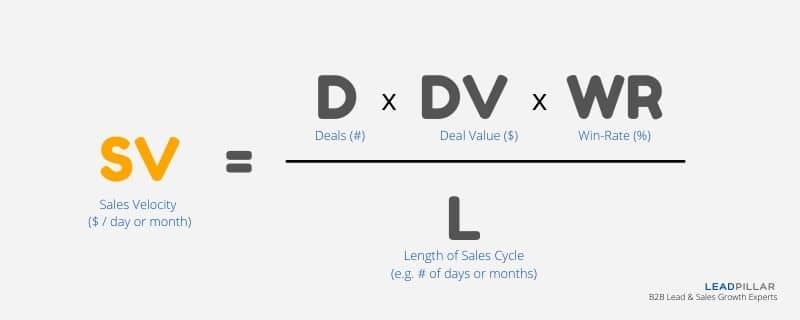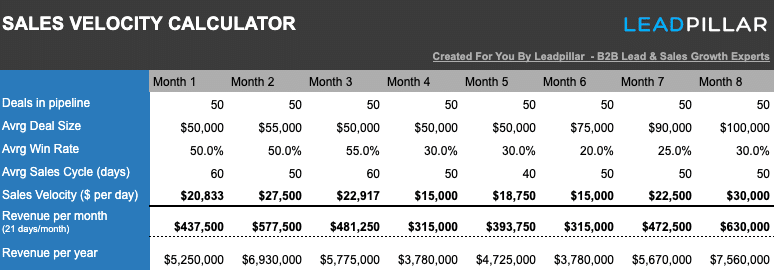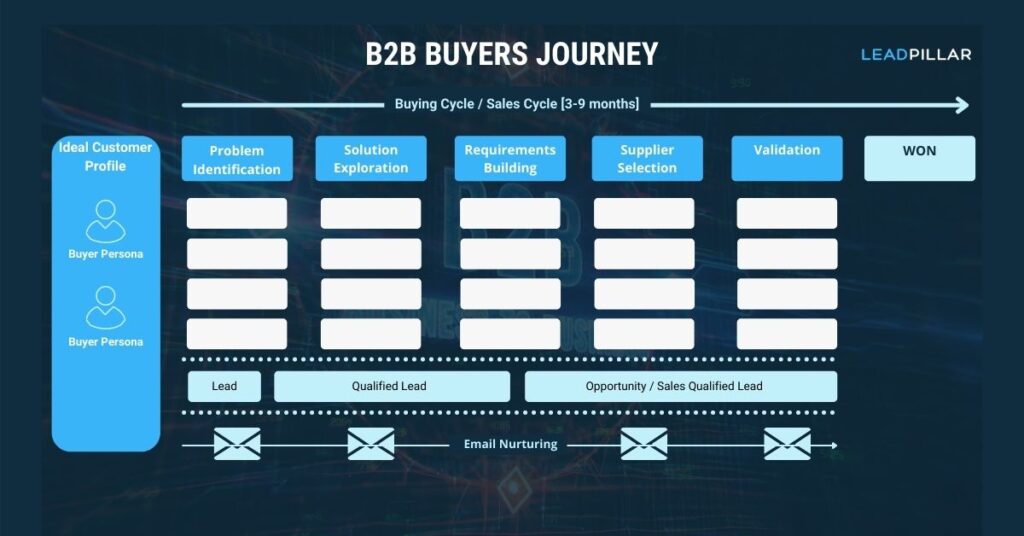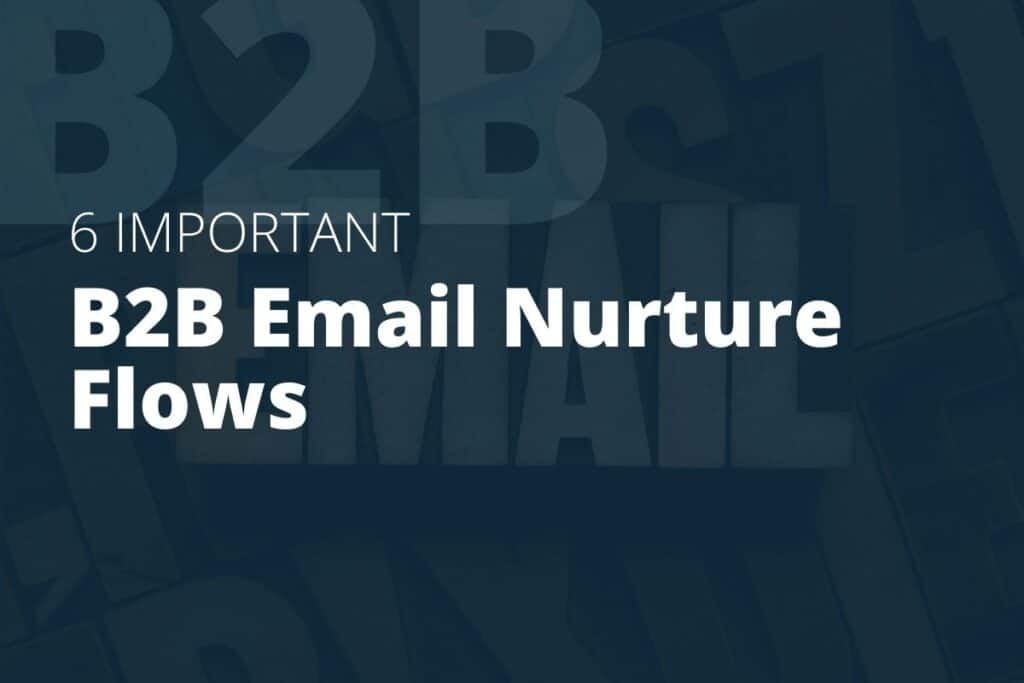What Is Sales Velocity?
“Sales Velocity” is the speed by which a prospect is turned from a “Deal” (opportunity) to “Won” (a new customer or new order for an existing customer), and measured as sales value per day.
The “sales velocity” is calculated using “average deal value”, sales cycle length (days), number of deals, and win-rate (percentage). The result is measured in revenue per time unit, e.g. revenue per month, week, or day, and tells you how much sales can be generated over a period of time.
What Is Sales Velocity Measuring?
Sales Velocity can help answer the typical questions, such as
(1) what is the sales velocity (sales per day, month, quarter) we need to reach our targets?,
(2) why didn’t we reach our sales targets, when we were certain that we would?
Using Sales Velocity is also important in managing expectations between marketing who produce the leads and sales who close the deals.
Let’s explain what Sales Velocity is and how to improve it.
How to Measure Sales Velocity

The 4 Sales Metrics In The Sales Velocity Equation
These are not the only 4 metrics that you want to measure your pipeline on but certainly among the most important. Make sure you include these in your reporting as they help you see the different elements that impacts your sales growth and what to do about it.
Number of Deals – The total number of deals (opportunities) in your CRM system.
Deal Value (Average) – The total value of all deals divided by the total number of deals in your CRM system.
Win-Rate – For simplicity reasons we will define deal conversion rate as the total number of deals “won” by the number of deals in the CRM system. As there are new deals created continuously the correct calculation would be the total number of deals “won” divided by total number of deals in the CRM system at the beginning of the period (e.g. month) that you are measuring on. Your CRM system will be calculating this number for you.
Sales Cycle Length – The average time it takes from a deal (opportunity) is created in the CRM system until the deal (opportunity) is “won”.
Example …
Sales Velocity is measured in value per period, e.g. $20,833 per day.
If the Sales Cycle Length is 60 days, 50 deals in the pipeline, with an average deal size of $50,000, and you “win” 50%, then your Sales Velocity is $20,833 per day ($5.25 Mill/Year).

A 10% increase in “Deals”, “Deal Size” or “Win-Rate” will mean a 10% increase in Sales Velocity, as there is a linear relationship.
The magic occurs when two or more of the metrics are improved.
If we increase Deal Value by 10%, to $55K and reduce the Sales Cycle Length by 10 days, then our Daily Sales (Sales Velocity)…
… increases by 32% to $27,500.
What Are You Struggling With In Your Sales Pipeline?
- You are getting the right prospects but not enough?
- Not attracting the right profile of prospects?
- Giving away too much discount to win some or all the contracts?
- Sales cycle too long for all or some of the prospects?
Increasing The Amount of Deals
If the company has defined what the Ideal Customer Profile looks like, marketing’s next step is to deliver the new prospects that fit this profile, thereby increasing the number of Deals in the pipeline.
It is paramount for sales growth that quality of new prospects that fit the agreed Ideal Customer Profile as the Average Deal Size, Sales Cycle Length, and Win-Rate will otherwise plummet and reduce the Sales Velocity.
More Prospects That Fit The Ideal Customer Profile
Have you defined what your Ideal Customer Profile looks like?
We can’t always control which prospects decide to reach out to us but we can control which prospects that we reach out to. The prospects we reach out to are those that will end up as our customers and shape our company.
Which customers provide the most revenue, least discount, consume a wide range of our services, and are generally happy with our service? Wouldn’t you want more of those, wouldn’t they pay more and eventually stay longer?
Create your Ideal Customer Profile and target prospects that look like them via Account Based Marketing and targeted advertising e.g. via LinkedIn ads.
Sales Cycle Length Is Too Long
When marketing delivers qualified leads, this will free up time for sales to handle more deals.
In many service companies, sales is handling both the research for prospects, contact information, and calling to qualify the prospects. On average a sales person may close 5% of the prospects where a contact is made. If sales is both identifying, engaging and nurturing the prospects, then the amount of prospects a sales person can handle and deals created, will be limited.
By adopting B2B lead generation, marketing will be able to handle the lead identification, engagement and nurturing, and thereby providing sales with more time to talk to prospects that have an acknowledged need that needs to be solved now. This will reduce the sales cycle length, and increase the amount of qualified prospects and deals that sales can handle.
Guide prospects through the buyer’s journey to reduce the sales cycle length.
77% of prospects find that the buying journey is “hard” and only 17% of the time spent on requirements, solution research and vendor selection, is actually spent together with a vendor.
Gartner Research
As the prospect is looking for answers online, on their own, to feed their buying journey, and not engaging with suppliers more than 17% of the time, then the risk is that the length of the buying journey becomes unnecessary. No prospect is excited about a long and costly supplier selection, but in most cases suppliers are just not providing the needed information online.
A way to engage prospects is to provide them with insights to their buying journey, how to solve their problem, and which decisions they need to make. Make it easy for them, build the trust, and it will provide you with more time together with the prospects and shorten the sales cycle.
How Do Reduce Discount & I Increase The Deal Value?
Measure the prospects engagement with your content online, sales, and service desk. It will tell you what problem they have, what answers they are looking for, and if they are looking for a solution in the near future.
A major challenge for some industries like e.g. IT-services is that discounts are often used to close contracts where the prospect may not have acknowledged a major “pain” to be solved, but if they can save money on their budget by changing suppliers, with only a small risk, then some will do that.
The fundamental challenge here is that the prospect may not be the Ideal Customer Profile and often not experiencing the pain your company is so great at solving, or the timing isn’t right. In both cases there is no real urgency but they might change if the discount is high enough.
Create content that provides your ideal prospects with answers to how to solve the typical major struggles. Measure their engagement frequency so you understand if it is a “now-thing”. A prospect that is looking for a solution within your area of expertise and is about to reach out to suppliers, will require less discount than those who are not looking but will consider if the discount is great enough.
Sales Velocity Calculator
Get the free calculator for Google Sheets
![Sales-Velocity-Calculator [Google-Sheet]](https://leadpillar.com/wp-content/uploads/2021/01/Sales-Velocity-Calculator-Google-Sheet-1.png)


![Account-Based Marketing vs Inbound Marketing Strategy [Guide]](https://leadpillar.com/wp-content/uploads/2022/08/Account-Based-Marketing-vs-Inbound-Marketing-Strategy-Guide.png)


![How To Create B2B Marketing Content That Converts - [Guide]](https://leadpillar.com/wp-content/uploads/2021/04/How-To-Create-B2B-Marketing-Content-That-Converts-Guide.jpg)